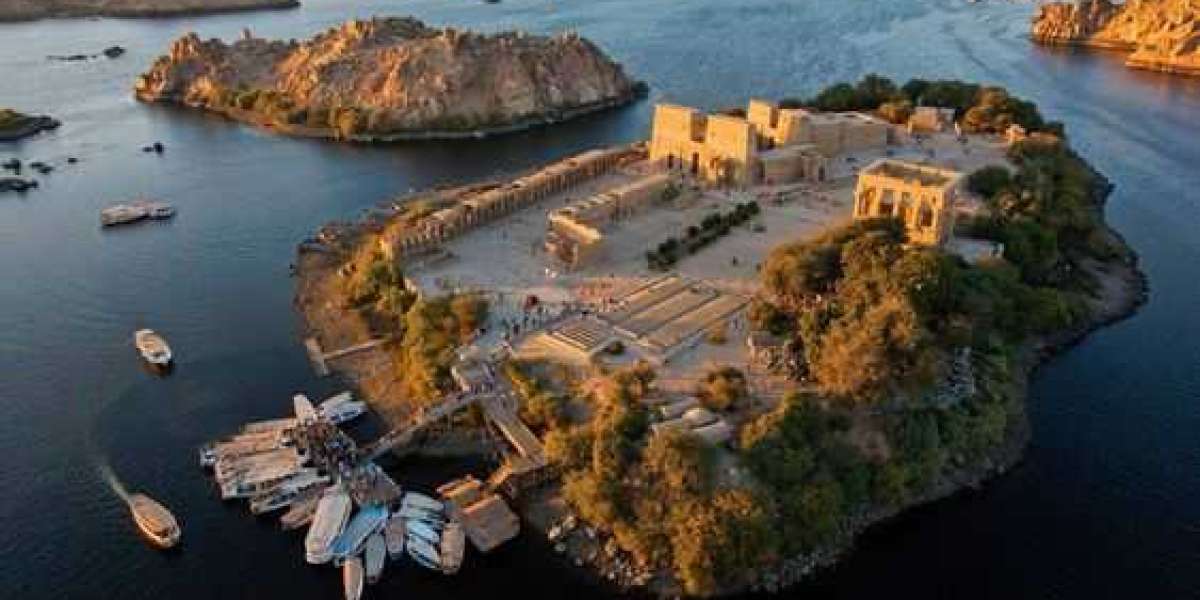Historical Landmarks in Luxor: A Journey Through Ancient Egypt’s Rich Heritage
Luxor, often referred to as the “world’s greatest open-air museum,” is a city steeped in history and ancient culture. Located on the banks of the Nile River in southern Egypt, Luxor was once the capital of ancient Egypt during the New Kingdom (1550–1070 BCE) and the center of the ancient Egyptian world. Today, it remains one of the most popular tourist destinations in Egypt, offering a wealth of historical landmarks that transport visitors back in time to an era of pharaohs, monumental architecture, and fascinating mythology. From the awe-inspiring temples and tombs of the Pharaohs to the majestic ruins of the ancient city of Thebes, Luxor is a treasure trove of ancient Egyptian heritage.
Dendera and the Temple of Hathor
Exploring the Treasures of the Nile
1. Karnak Temple Complex
Arguably the most famous and expansive temple complex in Egypt, the Karnak Temple is a must-visit historical landmark in Luxor. The temple was built over a period of 2,000 years, with construction beginning in the Middle Kingdom and continuing into the Ptolemaic period. The complex is dedicated to the god Amun, along with his consort Mut and their son Khonsu, forming the triad of Theban deities.
The most iconic part of the temple is the Hypostyle Hall, a vast room with 134 massive columns, each adorned with intricate carvings and reliefs depicting the achievements of the pharaohs. The temple also contains the Sacred Lake, where priests would perform purification rituals, and the Obelisks of Tuthmosis I and Ramses II, towering monuments that stand as symbols of the pharaohs' power.
Walking through the Karnak Temple, visitors can experience the grandeur of ancient Egyptian religious practices and gain insight into the history of Thebes, which served as the religious capital of Egypt for centuries.
2. Luxor Temple
Located in the heart of modern-day Luxor, the Luxor Temple is another stunning example of ancient Egyptian architecture. Built primarily during the reigns of Amenhotep III and Ramses II, the temple is dedicated to the Theban triad of Amun, Mut, and Khonsu. Unlike Karnak, which was a sprawling complex, Luxor Temple is a more compact and elegant structure, offering a sense of intimacy and grandeur.
The temple is known for its avenue of sphinxes, which once connected Luxor Temple to Karnak. These mythical creatures, with the body of a lion and the head of a ram, symbolize the connection between the two temples. Visitors can also admire the colossal statues of Ramses II that stand at the entrance and explore the temple's inner sanctum, where the king would have performed religious rituals.
3. Valley of the Kings
On the west bank of the Nile, across from Luxor, lies one of Egypt’s most famous archaeological sites—the Valley of the Kings. This royal burial ground was used for the interment of pharaohs and powerful nobles during the New Kingdom, and it contains over 60 tombs, including those of the legendary pharaohs Tutankhamun, Ramses II, and Seti I.
The tombs of the Valley of the Kings are famed for their intricate paintings and carvings, which depict scenes from the pharaohs' lives, their journeys to the afterlife, and their relationships with the gods. The tomb of Tutankhamun is the most famous, having been discovered nearly intact by archaeologist Howard Carter in 1922. It contained an extraordinary collection of treasures, including the iconic golden death mask of the young pharaoh.
Visiting the Valley of the Kings offers a rare glimpse into the afterlife beliefs of the ancient Egyptians and the luxurious burial practices reserved for their rulers.
4. Valley of the Queens
Located near the Valley of the Kings, the Valley of the Queens served as the burial place for the wives and children of pharaohs. Though it is less well-known than the Valley of the Kings, it is home to some remarkable tombs, including that of Nefertari, the beloved wife of Ramses II.
The Tomb of Nefertari is one of the most beautiful tombs in Egypt, known for its vividly painted walls that depict the queen’s journey to the afterlife, her devotion to the gods, and her connection with her husband. The tomb is considered a masterpiece of Egyptian art, with vibrant colors and finely detailed scenes that have been remarkably well-preserved.
5. Temple of Hatshepsut
One of Luxor’s most iconic landmarks, the Temple of Hatshepsut, is dedicated to one of ancient Egypt’s most powerful female pharaohs, Hatshepsut. Located at Deir el-Bahari, this temple is famous for its unique architectural design, with a series of terraces that blend harmoniously into the cliffs of the Theban Hills.
The temple’s walls are adorned with scenes of Hatshepsut’s reign, including her famous expedition to the land of Punt, which brought back exotic goods such as incense, myrrh, and animals. The temple is a testament to her remarkable achievements as a female ruler in a male-dominated society. Visitors can explore its grand hallways, admire the impressive statues of the queen, and take in the breathtaking views of the surrounding desert.
6. Colossi of Memnon
Standing at the entrance to the Valley of the Kings are the Colossi of Memnon, two massive statues of Amenhotep III that once guarded his mortuary temple. The statues are all that remain of the vast temple, which was partially destroyed by an earthquake in antiquity.
Each of the Colossi stands over 18 meters tall and depicts Amenhotep III seated on a throne, flanked by smaller statues of his family. The statues are known for their acoustic phenomenon: during the early morning hours, the statues would emit a mysterious sound, which the ancient Greeks believed was the voice of the king, hence the name “Memnon.”
7. Medinet Habu
Another fascinating site on the west bank of Luxor is the Temple of Medinet Habu, the mortuary temple of Ramses III, who ruled during the Twentieth Dynasty. The temple is less visited than some of the other major sites in Luxor but offers some of the best-preserved reliefs depicting Ramses III’s military victories, as well as scenes from his religious ceremonies.
The temple’s massive pylons and intricate carvings provide a unique insight into the military and cultural achievements of Ramses III, and its isolated location adds to the sense of discovery.
8. Luxor Museum
For those interested in learning more about Luxor’s fascinating history, the Luxor Museum is a treasure trove of artifacts from the region. Located near Luxor Temple, the museum showcases a wide range of ancient Egyptian artifacts, including sculptures, jewelry, and mummies, many of which were discovered in the surrounding temples and tombs.
The museum provides an excellent overview of Luxor’s role in ancient Egyptian history and offers visitors the opportunity to view items that were once part of the royal and religious life of Thebes.
Conclusion: A Journey Through Time
Luxor’s historical landmarks offer an unparalleled journey through the ancient world. From the colossal temples and tombs to the awe-inspiring art and architecture, Luxor is a living testament to Egypt’s glorious past. A visit to these sites provides an immersive experience into the beliefs, culture, and daily life of one of the world’s oldest and most powerful civilizations. Whether you are a history enthusiast, an archaeology lover, or simply a traveler seeking to explore the wonders of ancient Egypt, Luxor’s landmarks are sure to leave a lasting impression



